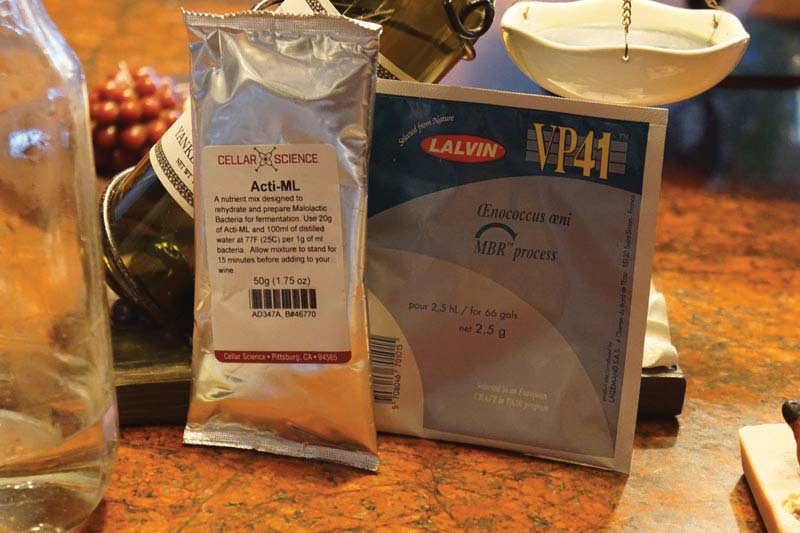That’s a great question and one, like so much in winemaking, that can be answered by a bit of a compromise. You’re on the right track by ordering your supplies right before harvest — live or even freeze dried “bugs” (microorganisms) like bacteria and yeast, as well as chemicals like malic acid and yeast nutrients, all have a shelf life, some much shorter than others. It’s always a good idea to use the freshest, most potent supplies that you possibly can to ensure the highest quality winemaking once the grapes start rolling in. That being said, if you order too late in the season, sometimes suppliers will be out of materials that you particularly wanted and, horrors, you will be subject to the dreaded back order! In addition to that, as you bring up, your delicate liquid yeast culture could get cooked en route by a careless delivery service.

So what is a conscientious winemaker to do? I suggest talking to your suppliers to find out the shelf life of all of the winemaking adjuncts you use and see how early you can safely order them. Things like yeast and ML cultures should be ordered right before harvest — I get my yeast delivered no more than a month before I expect the first grapes to be rolling in. Things that have a longer shelf life like tartaric acid, soda ash, or oak beans can be ordered up to six months beforehand, but three months is usually enough time to give your suppliers notice for your order while still leaving you enough of a window in case something needs to be back ordered. This also lets you do your shipping in the late spring, perhaps before temperatures start to climb towards the summer highs in your area.
I wouldn’t be overly concerned about shipping conditions for most of the things you might order. Items that tend to be most affected by high temperature include yeast, bacteria, and enzymes, and these can be shipped in Styrofoam containers with cold packs if necessary. My freeze-dried bacteria cultures arrive in said manner and, as long as I pop them in the freezer the same day they’re received, they seem to get along just fine. I’ve never had any problems with “static” additives like acids, cleaning agents, bentonite, tannins, or oak products being exposed to extreme temperatures, hot or cold. All of these items, and those like them, are quite hardy.
The bottom line is that you don’t want to order so early that you run up against expiration dates but you do want to order with enough of a window before harvest so you can ensure you’ll have everything delivered before the grapes start flying. Luckily, wine industry suppliers seem to understand this timeline to meet the needs of winemakers.




